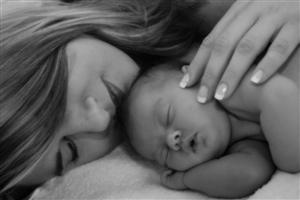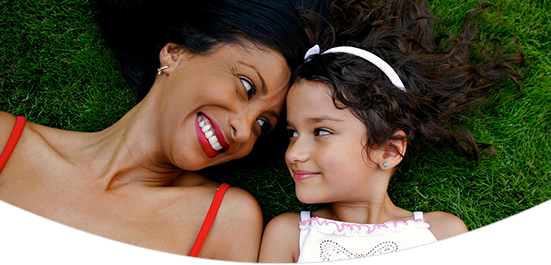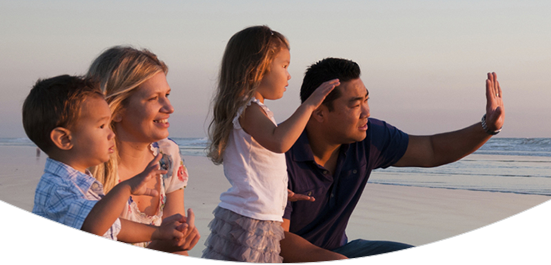
Elizabeth happened to mention her checklist for safe co-sleeping, and several listeners contacted me later to ask about it. I'm reprinting it here as a guest article with gratitude to Elizabeth, but I also encourage you to check out Elizabeth's website, where she has a wealth of material like this.
Elizabeth Pantley's Checklist for Safe Co-Sleeping:
- Your bed must be absolutely safe for your baby. The best choice is to place the mattress on the floor, making sure there are no crevices that your baby can become wedged in. Make certain your mattress is flat, firm, and smooth. Do not allow your baby to sleep on a soft surface such as a waterbed, sofa, pillowtop mattress, beanbag chair, or any other flexible and yielding structure.
- Make certain that your fitted sheets stay secure and cannot be pulled loose.
- If your bed is raised off the floor, use mesh guardrails to prevent baby from rolling off the bed, and be especially careful that there is no space between the mattress and headboard or footboard. (Some guardrails designed for older children are not safe for babies because they have spaces that could entrap tiny bodies.)
- If your bed is placed against a wall or against other furniture, check every night to be sure there is no space between the mattress and wall or furniture where baby could become stuck.
- An infant should be placed between his mother and the wall or guardrail. Fathers, siblings, grandparents, and babysitters don't have the same instinctual awareness of a baby's location as do mothers. Mothers: Pay attention to your own sensitivity to baby. Your little one should be able to awaken you with a minimum of movement or noise — often even a sniff or snort is usually enough. If you find that you sleep so deeply that you only wake when your baby lets out a loud cry, seriously consider moving baby out of your bed, perhaps into a cradle or crib near your bedside.
- Use a large mattress to provide ample room and comfort for everyone.
- Consider a “sidecar” arrangement in which baby's crib or cradle sits directly beside the main bed.
- Make certain that the room your baby sleeps in, and any room he might have access to, is childproof. (Imagine your baby crawling out of bed as you sleep to explore the house. Even if he has not done this — yet — you can be certain he eventually will!)
- Do not ever sleep with your baby if you have been drinking alcohol, if you have used any drugs or medications, if you are an especially sound sleeper, or if you are suffering from sleep deprivation and find it difficult to wake.
- Do not sleep with your baby if you are a large person, as a parent's excess weight poses a proven risk to baby in a co-sleeping situation. I cannot give you a specific weight-to-baby ratio; simply examine how you and baby settle in next to each other. If baby rolls towards you, if there is a large dip in the mattress, or if you suspect any other dangerous situations, play it safe and move baby to a bedside crib or cradle.
- Remove all pillows and blankets during the early months. Use extreme caution when adding pillows or blankets as your baby gets older. Dress baby and yourselves warmly for sleep. (A tip for breastfeeding moms: wear an old turtleneck or t-shirt, cut up the middle to the neckline, as an undershirt for extra warmth.) Keep in mind that body heat will add warmth during the night. Make sure your baby doesn't become overheated.
- Do not wear nightclothes with strings or long ribbons. Don't wear jewelry to bed, and if your hair is long, pin it up.
- Don't use strong-smelling perfumes or lotions that may affect your baby's delicate senses.
- Do not allow pets to sleep in bed with your baby.
- Never leave your baby alone in an adult bed unless that bed is perfectly safe for your baby, such as a firm mattress on the floor in a childproof room, and when you are nearby or listening in on baby with a reliable baby monitor.
Excerpted with permission by McGraw-Hill Publishing from The No-Cry Nap Solution (McGraw-Hill, 2009).




